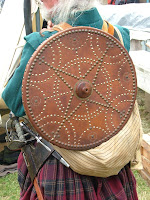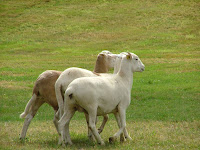
January 25th marks the celebration of a birth that occurred 252 years ago. This person came into the world before America was its own country; before the regency and Victorian eras swept England; before my ancestors had any inkling how the world would turn out.
The dry facts go like this: Robert Burns was born in Alloway, Ayreshire, in Scotland, in a farmer’s cottage. Poems, Chiefly in the Scottish Dialect was his first published work. Burns’ poem To a Haggis, is recited across the world during the annual Burns Night celebrations every January. His tongue-in-cheek exaggeration of his love for this oatmeal, onions, heart and liver concoction boiled inside a sheep’s stomach has elevated the simple sausage to a national icon.
Still wondering what all the hoopla about a guy long dead is all about? Do the English host a party on Shakespeare’s birthday? Do the Americans honor Longfellow? Not to this extent. The world has celebrated this poet’s life since a few years after his death when a group of Burns’ friends got together to read his poems and drink a little Scotch Whisky.
But, why has this January celebration evolved to include over 200 countries, hosting over 3000 separate celebrations in the dreary month of January? A friend of mine, David Bruce, wrote “Robert Burns lived and worked during the time of the great Scottish Enlightenment, that period in the eighteenth century when Scotland produced more men of letters, more men of learning and more men of science than any other nation on earth.”
Some of us idolize the man for his poetry and songs. Today, he is remembered in Scotland where a beautiful museum has been erected, dedicated to Robert Burns. This modern facility is located in his birthplace of Alloway.
January is here, again, and I miss the annual Robert Burns Night held by the St. Andrews Society of New Hampshire. My husband and I are lifetime members of the organization and attended the festivities many years running, but we moved to North Carolina to be near family and so I can write fulltime. I miss those gatherings. Upwards of 200 people attended dressed in Scottish attire to enjoy music, Highland dancers, fine whisky, great food, and a story about Robert Burns. The evening ended with everyone joining hands to sing one of Robert Burns’ songs, a very familiar song…Auld Lang Syne.
Happy Birthday, Robert.
Nancy Lee Badger
www.nancyleebadger.com
The dry facts go like this: Robert Burns was born in Alloway, Ayreshire, in Scotland, in a farmer’s cottage. Poems, Chiefly in the Scottish Dialect was his first published work. Burns’ poem To a Haggis, is recited across the world during the annual Burns Night celebrations every January. His tongue-in-cheek exaggeration of his love for this oatmeal, onions, heart and liver concoction boiled inside a sheep’s stomach has elevated the simple sausage to a national icon.
Still wondering what all the hoopla about a guy long dead is all about? Do the English host a party on Shakespeare’s birthday? Do the Americans honor Longfellow? Not to this extent. The world has celebrated this poet’s life since a few years after his death when a group of Burns’ friends got together to read his poems and drink a little Scotch Whisky.
But, why has this January celebration evolved to include over 200 countries, hosting over 3000 separate celebrations in the dreary month of January? A friend of mine, David Bruce, wrote “Robert Burns lived and worked during the time of the great Scottish Enlightenment, that period in the eighteenth century when Scotland produced more men of letters, more men of learning and more men of science than any other nation on earth.”
Some of us idolize the man for his poetry and songs. Today, he is remembered in Scotland where a beautiful museum has been erected, dedicated to Robert Burns. This modern facility is located in his birthplace of Alloway.

January is here, again, and I miss the annual Robert Burns Night held by the St. Andrews Society of New Hampshire. My husband and I are lifetime members of the organization and attended the festivities many years running, but we moved to North Carolina to be near family and so I can write fulltime. I miss those gatherings. Upwards of 200 people attended dressed in Scottish attire to enjoy music, Highland dancers, fine whisky, great food, and a story about Robert Burns. The evening ended with everyone joining hands to sing one of Robert Burns’ songs, a very familiar song…Auld Lang Syne.
Happy Birthday, Robert.
Nancy Lee Badger

www.nancyleebadger.com
About the author: Nancy loves chocolate-chip shortbread, wool plaids wrapped around the trim waist of a Scottish Highlander, the clang of dirks and broadswords, and the sound of bagpipes in the air. She and family volunteer at Highland Games while Nancy writes romantic stories with a light paranormal flavor. Whether its a time-traveling witch who meets the Highlander of her dreams, or a cursed dragon-shifter who hides from the beautiful seer on a lonely Scottish island, Nancy lives the dream. Nancy is a member of Romance Writers of America, Heart of Carolina Romance Writers, Sisters In Crime, Fantasy-Futuristic & Paranormal Romance Writers, and Celtic Heart Romance Writers. She lives and writes in North Carolina. DRAGON’S CURSE is available for download from www.WhispersHome.com









